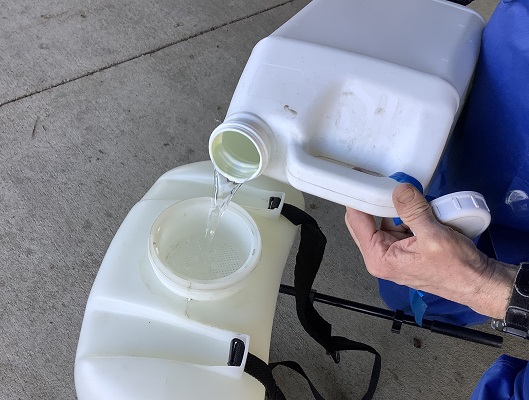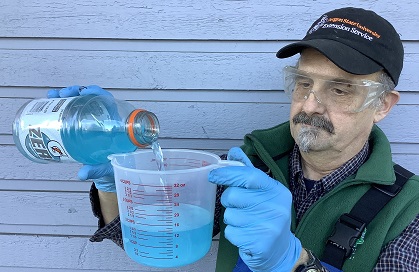Brad Withrow-Robinson, Forestry & Natural Resources Extension, Benton, Linn and Polk Counties. Photos Jody Einerson, Benton County Extension.
Backpack sprayers are often used to apply herbicides to control weeds in forestry and conservation work. It is often helpful to apply two or more chemicals at a time in a “tank mix”. For example, it is common to apply a foliar herbicide to kill actively growing weeds, along with a soil active herbicide to prevent new weeds from emerging over the following growing season. Or it may be useful to apply two different herbicides with similar action, but that target different types of weeds (grasses v broadleaf plants). Be sure to review the post on calibrating a backpack sprayer.
For all the convenience and benefits of using a tank mix, there can be problems. Not all registered chemicals like each other when put in the tank together. Or more correctly, many will do fine in a tank mix IF they are mixed in the correct order. Mix the products in the wrong order and you may end up with a sprayer full of gunk resembling cottage cheese. You will spend hours trying to clean your sprayer. There is nothing convenient about that.
So, if doing a tank mix, be sure to look for mixing information when reviewing the pesticide labels. If it is a new mix for you, consider doing a jar test for compatibility.
Here is my illustrated guide to mixing a back pack.
Add about half you spray volume of water.
- Add about half you spray volume of water.

2. Add any dry formulations first (wettable powders)


3. Agitate thoroughly! Takes energy to get things suspended.

4. Emulsifiable concentrates come next
5. Soluble formulations are the last herbicides to add.


6. Finally, add your adjuvants, dyes.

7. Top off with the rest of the water.
8. Agitate thoroughly!

